Louis Wain was born on August 5th, 1860 in London, the eldest of six children. Louis was born with a cleft lip, and because of this, his parents were advised not to send him to school until he was ten years old. As expected, once he went to school, his classmates bullied him for his differences.
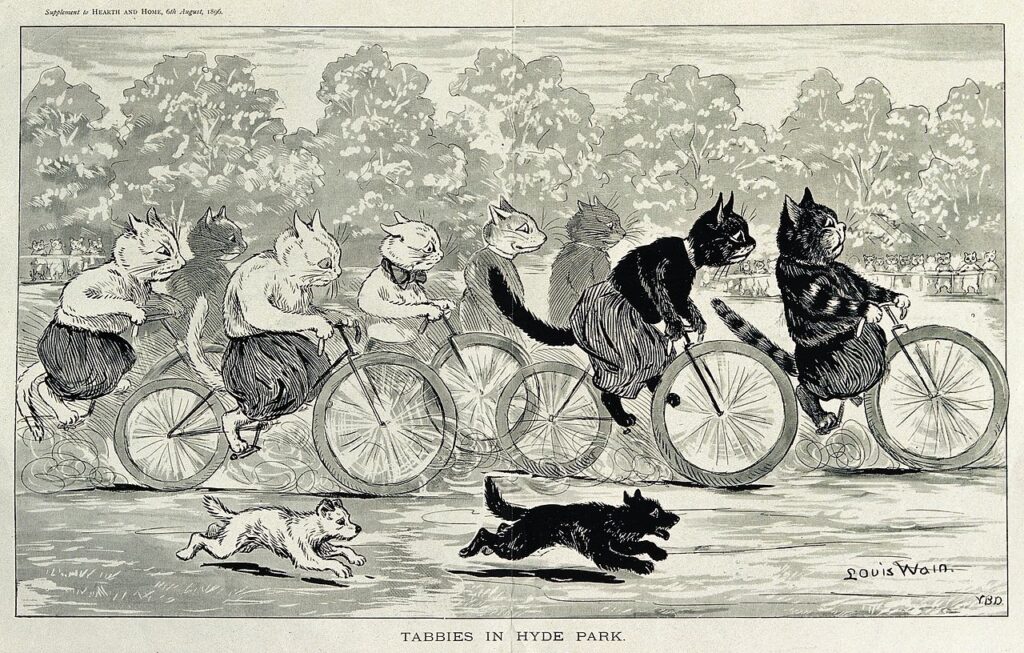
Louis attended the West London School of Arts and worked as a teacher for a short time until his father’s death. At twenty, he became the sole provider for his mother and five sisters, none of whom ever married. Wain was a skilled draftsman. He could sketch anything quickly, a pencil in each hand. He quit teaching to become a freelance artist and was very successful, obtaining a full-time position for The Illustrated London News in 1886. He also became known for his animal portraiture and was commissioned to sketch many dogs.
In 1884, at the age of 23, Louis married his sister’s governess, Emily Richardson, who was ten years his senior. Their relationship was considered scandalous because of her ‘advanced’ age and lower social status. Shortly after their marriage, she was diagnosed with terminal breast cancer. Wain drew pictures of their black and white housecat Peter to cheer her. Emily urged him to turn the sketches into The Illustrated London News, and the paper commissioned a Christmas spread of cats in 1886. His illustration, “The Kitten’s Christmas Party,” featuring more than 150 cats, appeared in the Christmas issue of the ILN in 1886 to great acclaim. Also, in 1886 Macmillan asked Wain to illustrate a children’s book called Madame Tabby’s Establishment. It was a success.
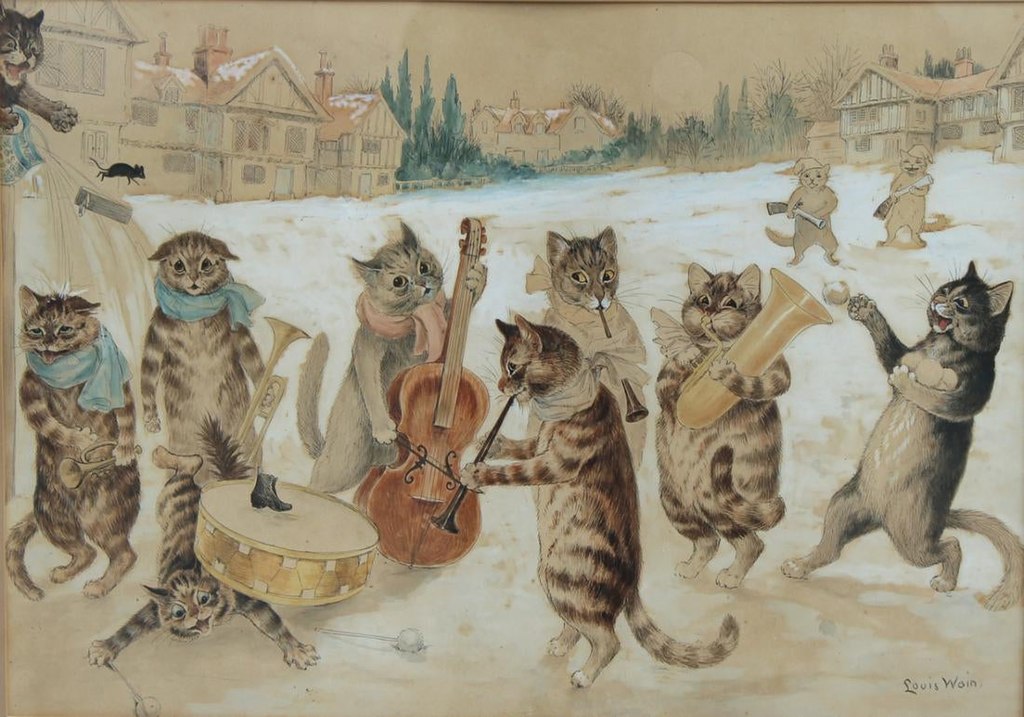
Emily died on January 2nd, 1887. Wain, a young widower at just 26, drew furiously to combat his grief.
These early drawings soon gave way to the “definitive Louis Wain cat”: instantly recognizable anthropomorphic felines in evening dress, sporting monocles, smoking cigars, and even playing cricket.
Cats were not popular in Victoria, England, who favored dogs’ loyalty to the suspicious nature of felines associated with witches and spinsters, but Wain changed that. Unfortunately, he was not very business-savvy and did not copyright any of his images. He would sell his pictures, which he created quickly, for an outright fee and not get paid for any reproductions. Although he was a household name, he was always struggling financially, especially since he cared for his mother and five sisters for their entire lives. He would dash off drawings as currency for certain services like hair cuts and admission to events.
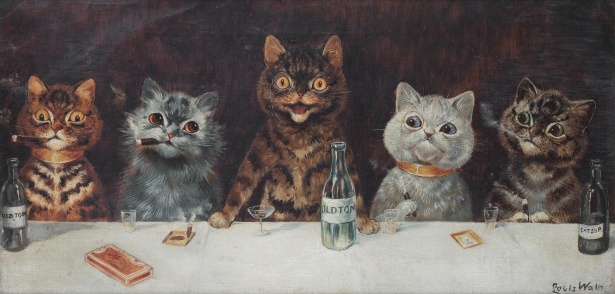
In 1890 his Christmas spread for the Illustrated London News featured over a hundred cats in the anthropomorphic style he became known for, wide-eyed creatures donning clothes and having a party.
In 1891 he became President of the National Cat Club and championed animal rights through his platform.
His youngest sister Marie was committed to an insane asylum in 1901 and died March 3rd, 1913.
From 1901 until 1915, the ‘Louis Wain’s Annual‘ full of his drawing, poems, and stories, was released yearly, then semi-regularly until 1923. In 1907 Wain traveled to New York hoping to improve his financial situation. Hearst contracted him to create comic strips “Cats About Town” and “Grimalkin.” His mother died in 1910, and he returned to England.
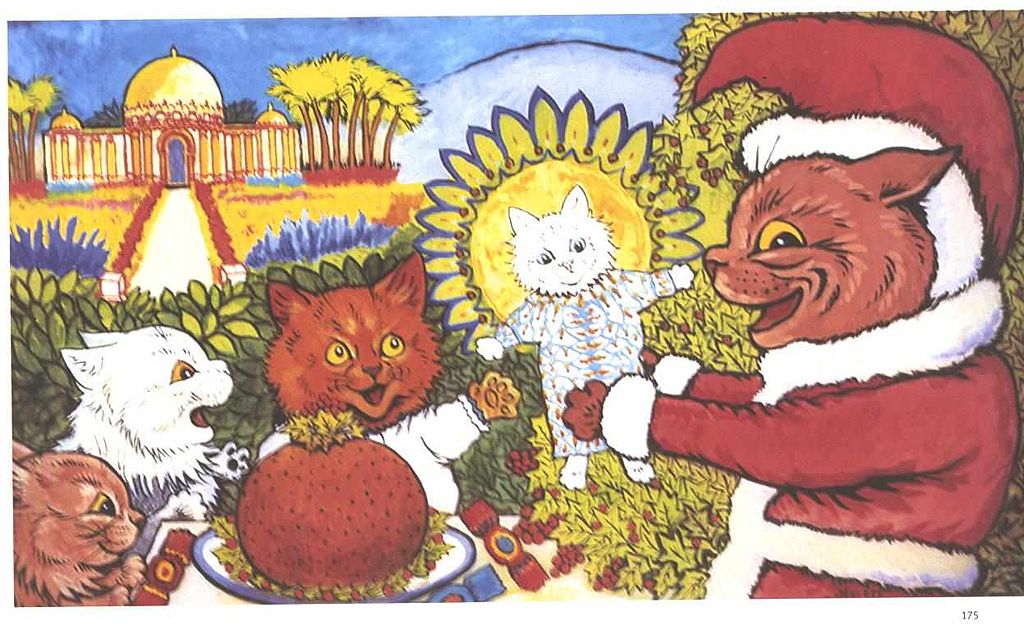
The oldest of the Wain sisters, Caroline, died of the flu on April 14th, 1917. Wain became increasingly paranoid and hostile to his remaining sisters, and on June 16th, 1924, a doctor was called and he was diagnosed as insane and taken to the paupers’ ward of Springfield Hospital.
His sister Claire and Felice, artists, began to teach sketching and sell their art, having some success in creating miniatures, painting on glass, and fore-edge painting to books that allowed them to support themselves.
In 1925, journalist and bookshop owner Dan Rider found Louis Wain drawing in the asylum. Distraught at his condition, Rider started a fund to provide a more comfortable life for Wain’s remaining days. Many got involved in the fund, including Prime Minister Ramsay MacDonald and H.G. Wells, who said of Wain, “He has made the cat his own. He invented a cat style, a cat society, a whole cat world. English cats that do not look and live like Louis Wain cats are ashamed of themselves.”
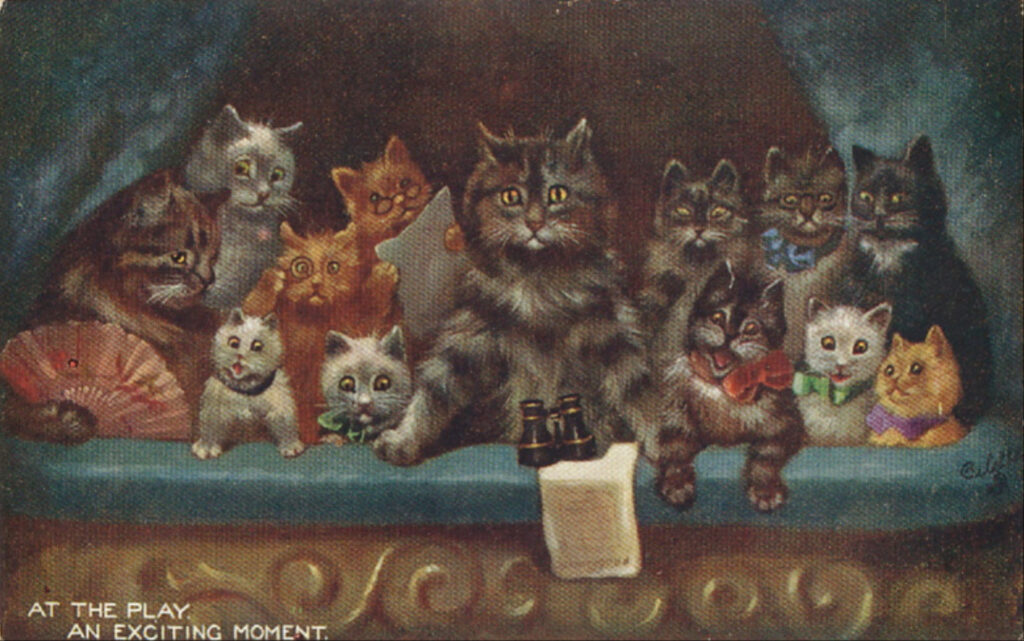
Wain was transferred to Bethlem Royal Hospital by the end of August 1925, and soon he felt well enough to put together an exhibit held at the XXI Gallery that included 80 original cat paintings. The featured catalog, Souvenir of Louis Wain’s Work, sold thousands.
In 1930 Wain was moved to the Napsbury Hospital in the country. It had a feral cat population, and Louis lived out his days creating art among the trees and gardens.
Wain was originally diagnosed with schizophrenia, although there is debate over this diagnosis. Thanks in part to a chart depicting his ‘dissolving cats’ found in a ‘Psychotic Art’ book in the 1960s his art has been inextricably linked with psychology. Some point to a deterioration of his style tied to his mental condition getting worse as he aged, but there is no proof of this theory in dated art – it may simply have been different experimentations in style. Even in his advanced age, Wain drew realistic cats, not just the frazzled psychedelic ones he is famed for. Others argue that his continued skill in drawing speaks more to his potentially being autistic or neurodivergent rather than to the original diagnosis of schizophrenia.
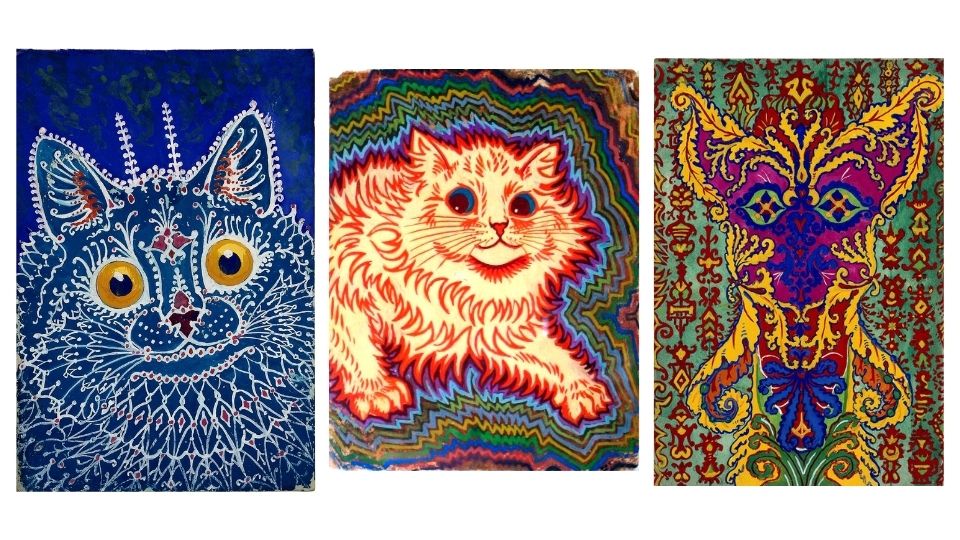
The textile design that decorated the background of Wain’s later cats may have been influenced by his childhood, as his father was in textiles and his mother embroidered.
Louis Wain died July 4th, 1939, at the age of 79.
The first biography of Wain, The Man Who Drew Cats, by Rodney Dale, was published in 1968, renewing interest in the artist. The book was reissued in 1991 and 2000. In 1972, inspired by the book, a comprehensive exhibition of Wain’s work was held at the Victoria & Albert Museum in London. Chris Beetles, a dealer in British Art, has held annual exhibits of Wain’s work since. Beetles is a leading authority on Wain and wrote his own book, Louis Wain’s Cats (2011), which was re-released in 2021 with a new forward by Benedict Cumberbatch to accompany the 2021 movie he stars in The Electrical Life of Louis Wain.

In addition to singular cat paintings by Wain found on Biblio, we have many books available to start or continue a collection. Between 1895 and 1905, some forty books illustrated by Wain appeared on the market, alongside hundreds of postcards, miniatures, souvenirs, and keepsakes.
Wain illustrated over two hundred books in his lifetime. These include All Sorts of Comical Cats, (1902) verses by Clifton Bingham, Cat’s Cradle (1908), Daddy Cat (1915), Days in Catland, Tinker, Tailor, Fun and Frolic, Friskers and his Friends (1909) by Marian Hurrell, and many more.
Amy C. Manikowski is a writer living in Asheville, NC.

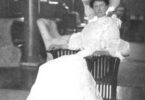
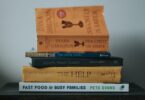




I truly enjoyed reading this article, but I just wanted to point out that the term “Asperger’s” is outdated and not widely appreciated in the neurodiverse community; the name refers to Hans Asperger, a psychologist who cooperated with the Nazi regime in the 1940s. Autism spectrum disorder is the preferred term, now, though I believe some would argue it’s far from a disorder and is just a difference in perceptions.
Thank you for pointing that out! That sentence now reads: “Others argue that his continued skill in drawing speaks more to his potentially being autistic or neurodivergent rather than to his original diagnosis of schizophrenia.”